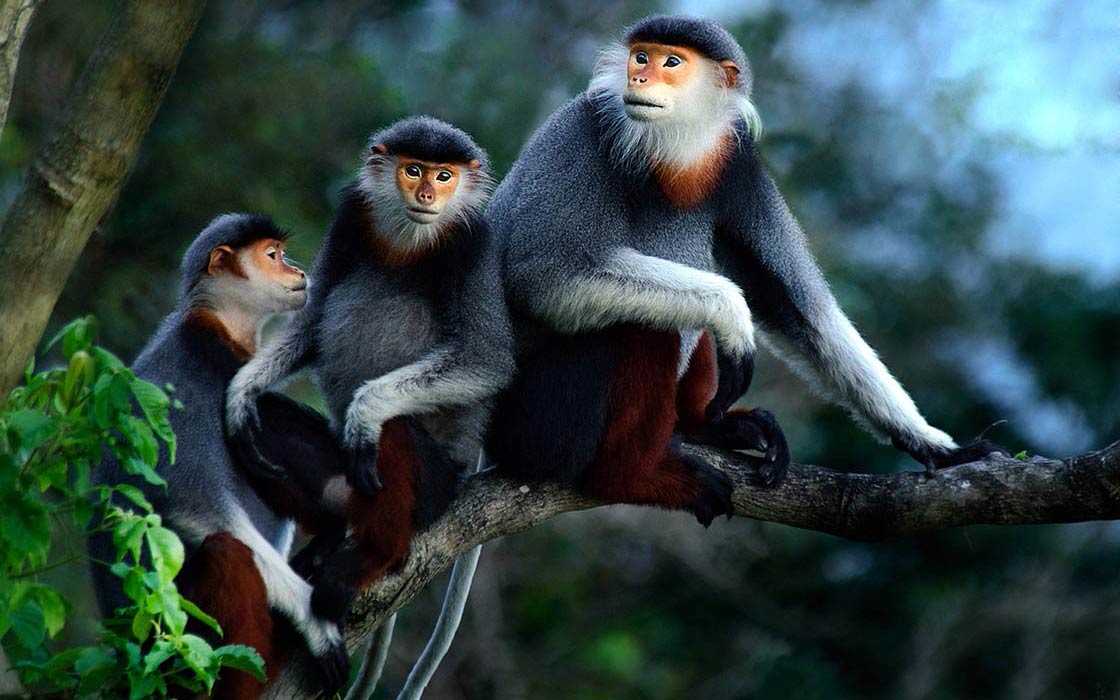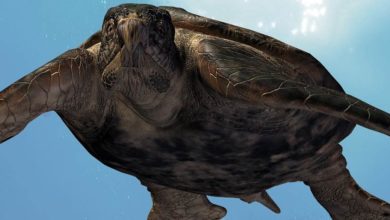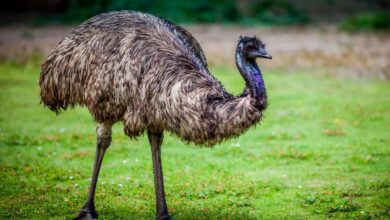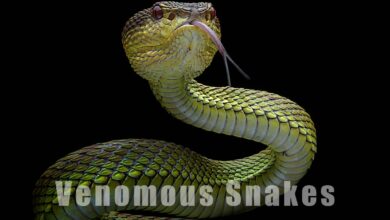Red-shanked douc (Pygathrix nemaeus)
This arboreal monkey stands out of other primates, not only with its impressive jumps but also (and perhaps most of all) with an unusual color that many associates with… a disguise. In addition to the abovementioned features, the douc is picky when it comes to the food but it is also an empathetic creature, which is worth to be learned about a bit more. Reading about the red-shanked douc, our readers will certainly recall beauty with a blue face – snub-nosed monkey described by us not so long ago.
Classification
- Class: Mammalia
- Order: Primates
- Family: macaques
- Genus: Pygathrix
- Species: Red-shanked douc
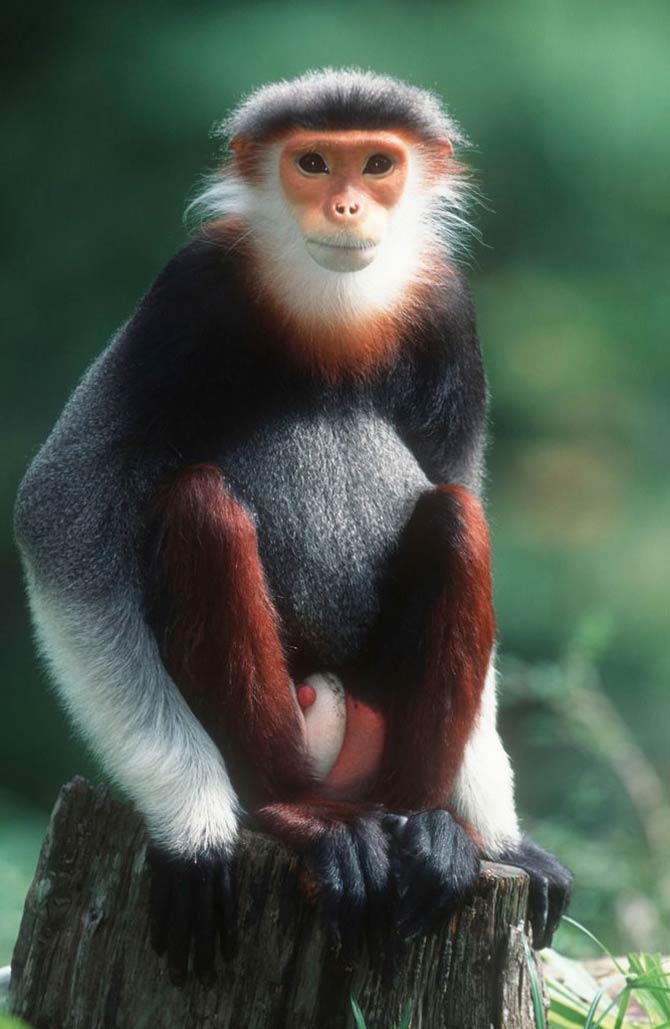
Subspecies:
Pygathrix namaeus nameaus
It lives in central and northern Vietnam, central-eastern Cambodia and probably in the Chinese island of Hainan.
The back of its legs is black, while the fur on the front of the legs is burgundy and resembles the gaiters. The forearms (from the elbow to the wrist) are white, the rest of the body is gray agouti (both tips of the hair are darker than the middle part of the hair). The rump is covered with white hair, but only in males. On the face, mainly on the cheeks, can be seen long, white hair. The rest of the face is in shades of red and yellow.
Pygathrix nigripes nemaeus
It occurs in South-East Cambodia, South Vietnam, and Laos. The back of the hind limbs is covered with black hair, forearms and chest are gray. The face is black, the hair on the cheeks is short, as opposed to the above-described subspecies. Males have a white rump.
Pygathrix nemaeus cinerea
It occurs in the uplands of the central Vietnam. The agouti shades of gray prevail. The arms and hind legs are black, and the chest, neck, and tail are white. The skin of the face is golden brown, with orange accents on the nose and between the eyes.
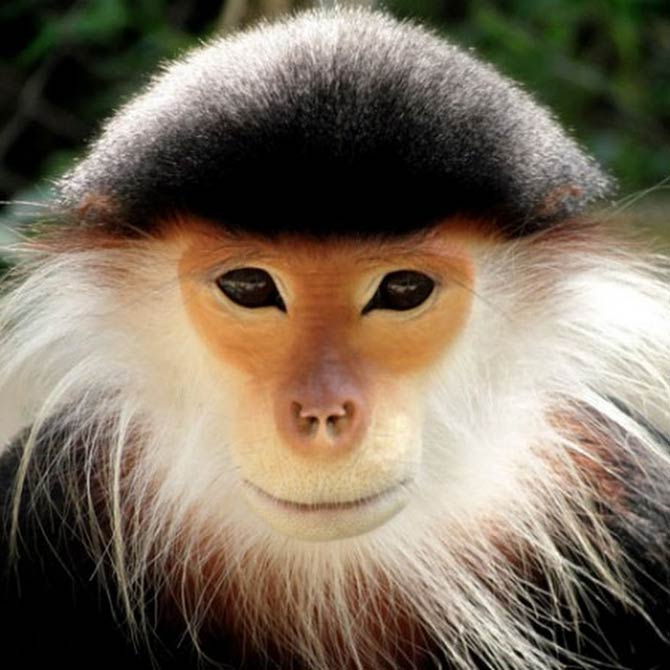
Habitats
Red-shanked douc is native species of Southeast Asia. It chooses a variety of areas from lowland to mountain peaks to up to 2000 m above sea level. It can be found in both rain and monsoonal forests, both primary and secondary.
Characteristic
Appearance
Douc’s body is slender and proportional; The average length of the male’s body is 61 cm (24 in), while the female is about 54 cm (21.5 in). A tail, which is not prehensile can reach 55 – 76 cm (22 – 30 in) in length. The average weight of males is 11 kg (24 lb), females are slightly lighter – they weigh on average 8 kg (19 lb). A slight sexual dimorphism is also present in terms of coloration: triangular, white markings are visible on the male’s forehead and do not occur in females.
The species has a very rich and spectacular coloration, which we have already broadly described. Juveniles are brighter, their coloration changes when they are about 10 months old.
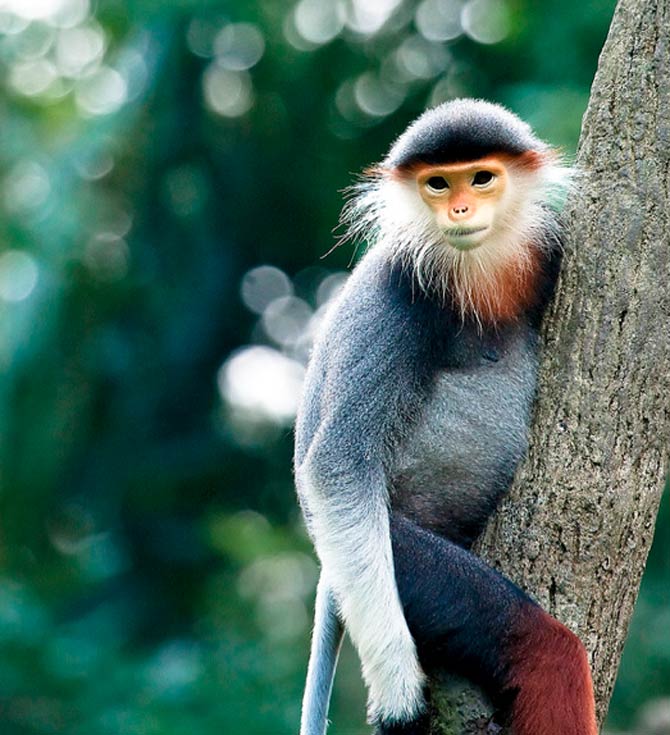
Diet
This monkey leads a daily life, therefore it sleeps at night and looks for food during the day. All daily activities are performed on the trees. Its diet consists mainly of fibrous leaves. Like other herbivores, douc has a multi-compartment stomach, rich in various cellulose-degrading bacteria. This decomposition occurs in the process of fermentation, which is why douc’s stomach is swollen.
It prefers young, small and delicate leaves, but also fruits (e.g. figs), flowers, bamboo shoots and seeds. Its diet is very rich in water, therefore the douc does not have to come down from the trees to replenish the fluids in the body. It consumes about 50 species of plants and does not eat meat at all.
It carefully checks out each plant before eating and when it finds it over-ripe or unripe, it throws it away.
Although it eats its food near other monkeys, this does not lead to a conflict between them. On the contrary – doucs like to share their food with others. This generosity is an unusual feature among the Old World monkeys.
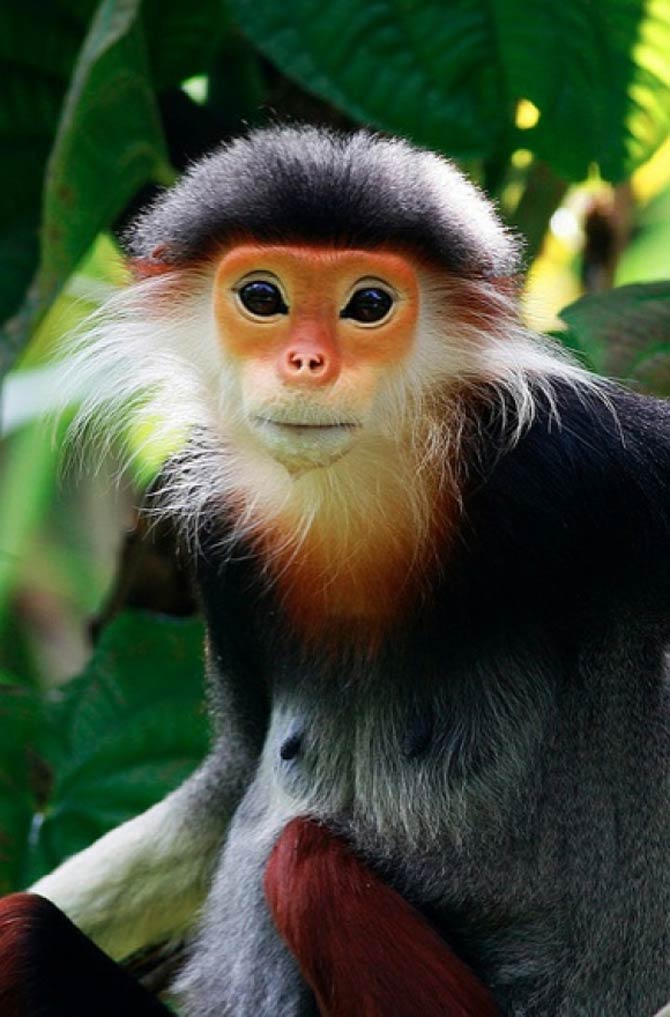
Behavior
Douc is a highly socialized animal that is able to communicate with other animals in various ways.
It uses sight, touch, and voice. In order to indicate that it would like to be groomed or have fun, it bares. When it lifts its eyebrows, it displays fear or submission. It shakes its head in order to initiate sexual contact. It growls in a low tone when threatening other members of the group, and barks loudly and vigorously while moving branches of trees in an emergency or during feeding.
However, the touch constitutes the main communication channel: grooming serves to remove parasites and dirt from the hair. Although it occurs the most often between mothers and their offspring, adult males also willingly participate in these rituals. It is believed that the grooming is intended to strengthen social ties. Doucs like playing: they can fight with each other, chase, touch and kiss each other in the lips. They are willing to play the most in the morning, early in the afternoon and just before the bedtime.
The douc moves on 4 limbs, but more often it just jumps from place to place. It bounces on its hind legs and lands on them as well. It has also been observed that the douc moves among the crowns of trees along specified trails.
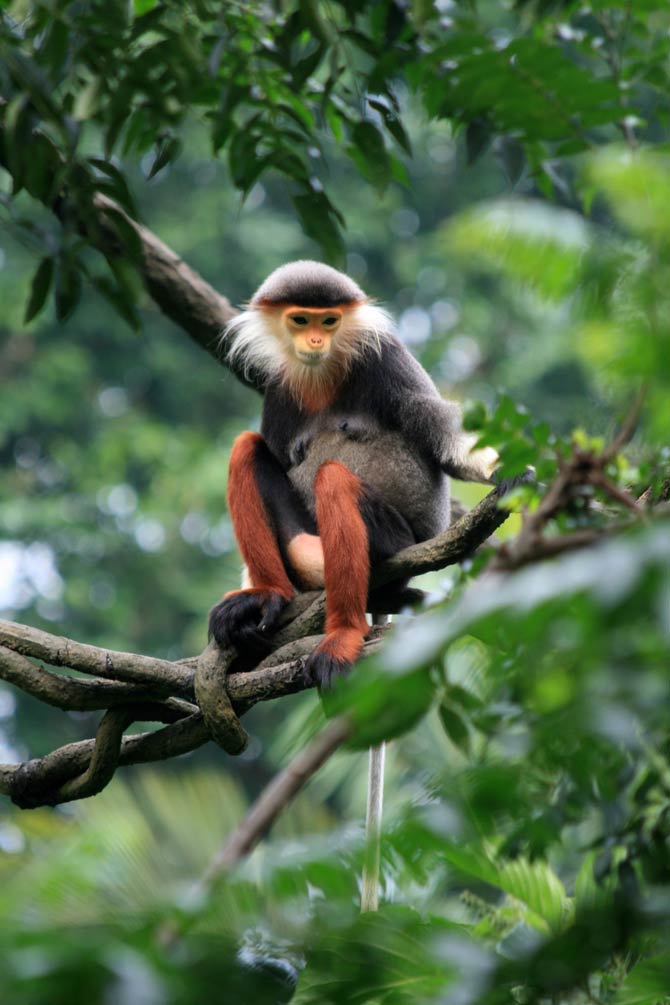
Community
It leads a daily and arboreal lifestyle. It usually lives in groups of 4 – 15 individuals, although there are groups consisting of 30 – 50 individuals of both sexes. In one group, there are one or more individuals of both sexes, however, there are about 50% more females. Every gender creates its own hierarchy based on domination. Within one group, males are always higher in a hierarchy than females. When a male or a female reaches sexual maturity, it leaves the parent group.
Reproduction
Before copulation, the male and the female manifest mutual interest. This is manifested by the characteristic grimaces associated with shaking the head. The first step is usually done by the female and she is the one, which controls the copulation.
Females are fertile every 28 – 30 days, at which time the crotch becomes swollen and red. Pregnancy lasts 165 – 190 days, in freedom births usually take place between February and June when food supplies, especially fruit, are abundant. The female usually gives birth to one juvenile, a multiple pregnancy happens rarely. After birth, the young instinctively hold the mother’s fur. It is not known how long the female takes care of the offspring. In captivity, it has been observed that the interval between pregnancies is approximately 2 years. Males reach puberty at the age of 4 to 5, females at the age of 4.
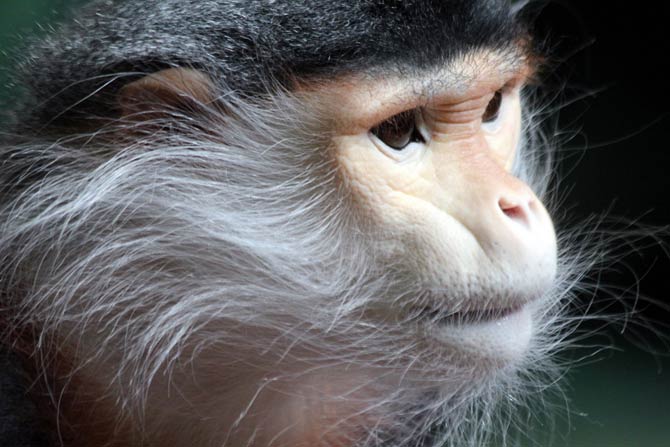
Detailed data / size
Red-shanked douc (Pygathrix nemaeus)
- Body length without tail:
- males: on average: 61 cm (24 in)
- females on average: 54.5 cm (21.5 in)
- Tail length: 56 – 76 cm (22 – 30 in)
- Average weight:
- males: 11 kg (24 lb)
- females: 8.5 kg (19 lb)
- Lifespan: 21 – 25 years in captivity
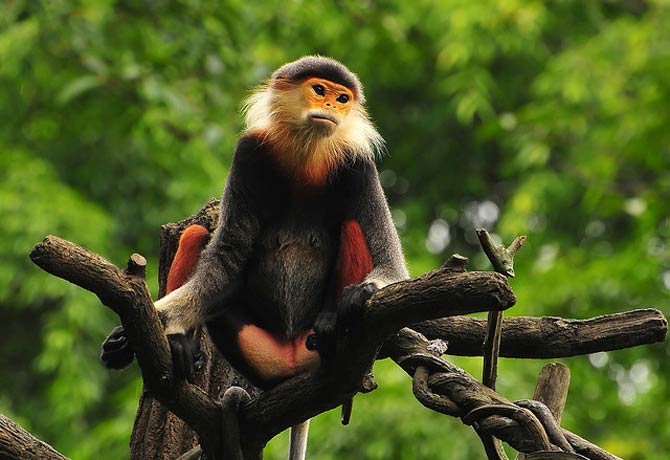
Red-shanked douc – curiosities
- The name “douc” comes from the Vietnamese word for “monkey”.
- The douc is sometimes called costumed ape due to the unusual, slightly “stage” coloration.
- The douc can make a 6-meter (20 ft) jump from branch to branch.
- The species is threatened with extinction due to deforestation, poaching, and illegal animal trafficking. These monkeys are often kidnapped from their natural environment in order to be used in medical experiments.


